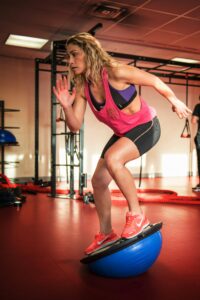
Multi Gym Workout Plan For Beginners
Creating a multi gym workout plan for beginners requires an understanding of both scientific principles and your individual response patterns. The most successful approach combines structured progression with flexibility to adjust based on ongoing feedback from your body.
Assessing Your Current Fitness Level
Before designing a training plan, establish accurate baselines for your current capabilities. This assessment should include sport specific performance metrics, general fitness markers, and recovery capacity indicators. Simple field tests like timed runs, maximum strength assessments, or sport skill evaluations provide valuable reference points to measure future progress.
Beyond performance metrics, honestly evaluate your limiting factors. Are you held back by endurance, strength, technical skill, or recovery capacity? Identifying these constraints helps prioritize training elements that will deliver the greatest improvements. Remember that weaknesses often respond more quickly to training than existing strengths, making them prime targets for improvement. For more insights, consider exploring the guide to peak performance.
Setting Realistic Progressive Goals
Effective goals create a roadmap for training decisions while maintaining motivation through measurable progress. Structure your goals in hierarchical fashion, with long term aspirations supported by medium term objectives and short term process goals. This approach creates a clear connection between daily actions and ultimate outcomes.
Ensure goals are specific, measurable, and include clear timeframes. Rather than vague aims like “get stronger,” target precise outcomes such as “increase squat by 15% within 12 weeks” or “reduce 5K time by 3 minutes this season.” Process goals like “complete all planned recovery sessions” or “maintain Zone 2 heart rate during endurance work” often prove more actionable than pure outcome goals.
Creating Weekly Training Templates
Effective training weeks balance stimulus and recovery while targeting different physiological systems. Design templates that distribute workload appropriately across the week, considering your recovery capacity, outside stressors, and schedule constraints. Most athletes benefit from alternating harder and easier days rather than clustering all intense sessions together.
Include variety in training stimuli to prevent adaptation plateaus and maintain engagement. A balanced template might include sessions focused on strength, endurance, power, technique, and active recovery, with proportions determined by your sport’s specific demands. Build flexibility into your template with contingency options for days when life disrupts planned sessions or recovery status indicates a need to modify workouts.
Tracking Metrics That Actually Matter
Tracking too many variables creates analysis paralysis, while tracking too few provides insufficient feedback for intelligent adjustments. Focus on metrics that directly relate to your performance goals and provide actionable insights. Performance indicators (times, weights, and distances) should be balanced with recovery markers (HRV, sleep quality, subjective readiness).
Maintain consistency in measurement conditions to ensure valid comparisons over time. For example, test performance metrics at similar times of day, in comparable environmental conditions, and with similar nutrition status. Look for trends rather than reacting to single data points, as day to day variability is normal even during successful training periods.
Start Training Smarter Today: Your Action Plan
Begin implementing smarter training principles with these sequential steps: First, establish baseline measurements including performance metrics and recovery markers. Next, design a balanced weekly template that includes appropriate intensity distribution. Then implement strategic recovery practices including sleep optimization and nutrition timing. Finally, develop consistent tracking habits that inform ongoing adjustments to your training approach. Remember that small, consistent improvements in training quality compound over time to produce remarkable results.
Frequently Asked Questions
Athletes at all levels share common questions about implementing smarter training approaches. These answers address the most frequent concerns and misconceptions about optimizing your training methodology.
Signs You’re Training Smart vs. Just Training Hard
Training Smart: Consistent energy levels, steady performance improvements, minimal injuries, enthusiasm for training.
Just Training Hard: Chronic fatigue, frequent illness, injury, stalled progress despite increased effort, dreading workouts
The distinction between smart and hard training often becomes apparent in your overall energy levels and long term progress trajectory. Smart training leaves you feeling accomplished but not destroyed, while delivering consistent improvements over time.
Another key indicator is your ability to maintain training consistency without interruptions from illness or injury. Smart training builds resilience rather than breaking you down, creating sustainable progression rather than cycles of progress and regression.
How quickly will I see results from training smarter instead of harder?
Initial improvements in how you feel during and after workouts typically appear within 1-2 weeks of implementing smarter training principles. Many athletes report better energy levels, improved sleep quality, and reduced soreness almost immediately. Measurable performance improvements generally emerge within 3-6 weeks as your body adapts to the more balanced training approach. Long term performance breakthroughs often occur around 8-12 weeks when the cumulative benefits of optimized recovery and strategic intensity begin to compound.
Do I need expensive equipment to implement smart training techniques?
Many smart training principles require no equipment at all strategic workout scheduling, proper warm ups, and recovery practices can be implemented immediately at zero cost. A basic heart rate monitor (£50-100) provides tremendous value for intensity management, while a simple training journal helps track progress and identify patterns. More advanced tools like HRV monitors or comprehensive fitness watches enhance the process but aren’t essential starting points. Focus first on mastering fundamental principles before investing in sophisticated technology.
Can smart training principles work for beginners or only experienced athletes?
Smart training principles benefit athletes at all levels, often providing even greater relative improvements for beginners. Novice athletes can progress with almost any consistent training, but implementing intelligent approaches from the start establishes sustainable habits and prevents common pitfalls. Beginners should focus particularly on technique development, consistent moderate intensity foundation work, and learning to interpret their body’s feedback signals. The principles remain the same across experience levels, though specific applications may differ based on training history and recovery capacity.
For beginners, smart training often means doing less than you feel capable of in individual sessions to ensure consistent progress over weeks and months. This patient approach builds foundational fitness while developing the body awareness needed for more advanced training later.
How do I know if I’m overtraining or just challenging myself appropriately?
Key warning signs of overtraining include persistent fatigue that doesn’t resolve with a rest day, declining performance despite continued training, disrupted sleep patterns, increased resting heart rate, frequent illness or injuries, and decreased motivation. Appropriate training challenges should feel difficult during the session but leave you feeling recovered and ready for the next workout after proper rest. Track both objective markers (resting heart rate, performance metrics, HRV if available) and subjective feelings (energy levels, motivation, muscle soreness) to identify when training load exceeds recovery capacity. When in doubt, remember that undertraining slightly is far less detrimental than overtraining.
Should I hire a coach to help implement these smart training techniques?
A qualified coach can accelerate your progress by providing personalized guidance, objective feedback, and accountability. Coaches are particularly valuable when learning new technical skills, designing periodized training plans, or navigating plateaus. The ideal time to consider coaching is when you’re serious about improvement but uncertain about the most effective approach for your specific situation. If working with a coach isn’t feasible, consider joining training groups, finding a knowledgeable training partner, or investing in educational resources to build your own expertise.
When selecting a coach, look beyond credentials to find someone whose philosophy aligns with sustainable, science based approaches rather than extreme methodologies. The best coaches emphasize long term development over quick fixes and adapt their methods to individual needs rather than applying one size fits all programs.
Implementing smarter training principles doesn’t mean taking the easy route it means taking the effective route. By working with your body’s natural systems rather than against them, you’ll discover performance potential you didn’t know you had. The sustainable progress that comes from training smarter creates not just better performance, but also greater enjoyment and longevity in your athletic pursuits.






